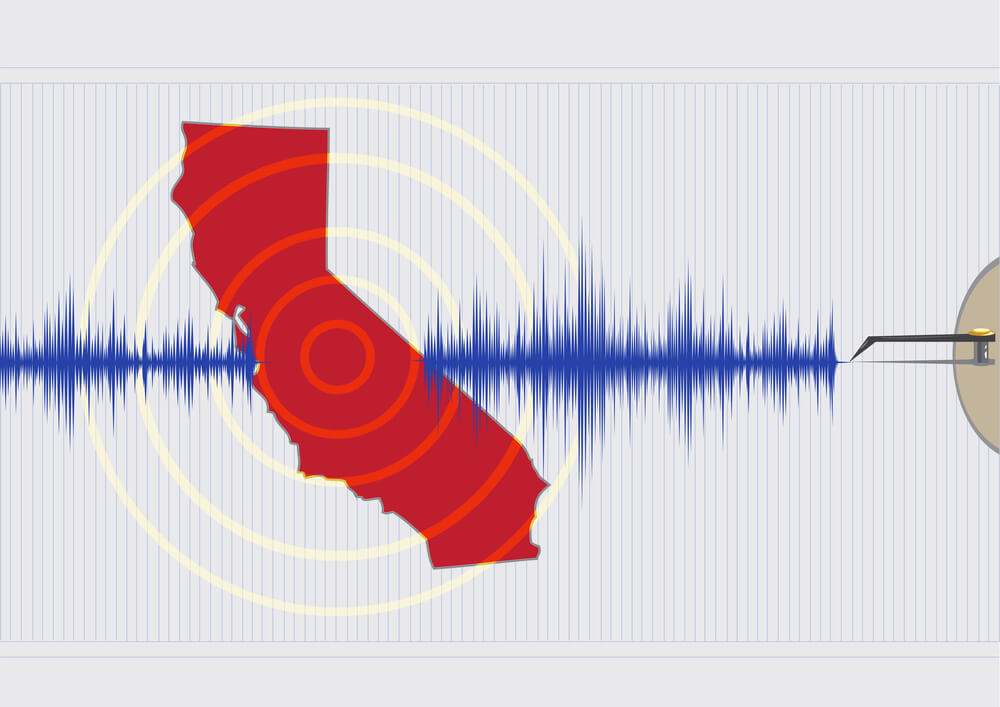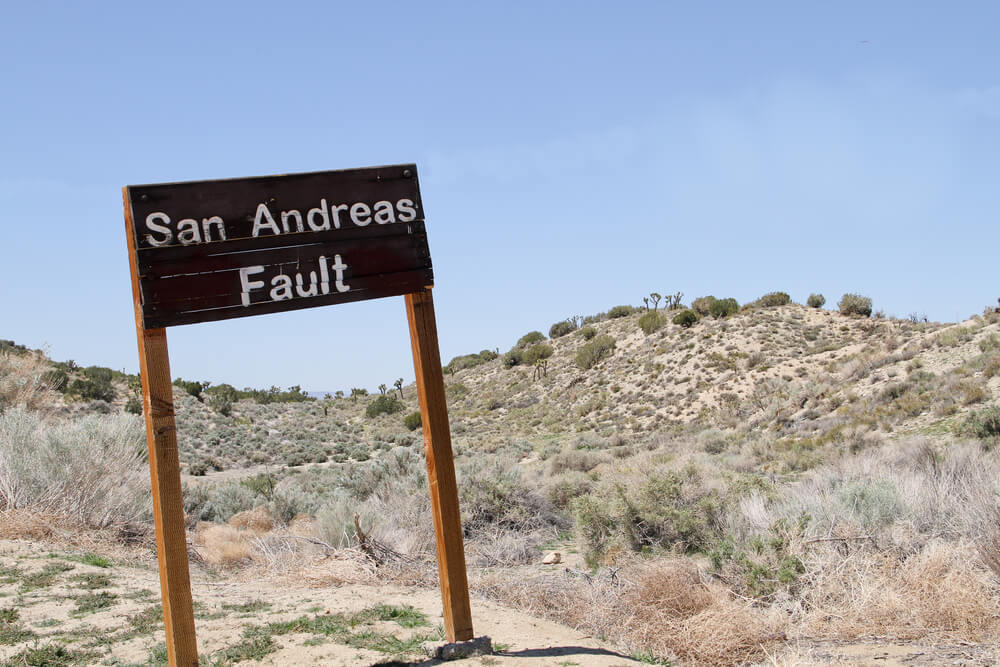More than 1000 earthquakes occurred in California in three weeks: what should residents prepare for
The seismic storm that caused more than 1000 small earthquakes in the California districts of San Bernardino and Riverside over the past three weeks, frightened the inhabitants of the region.

Фото: Depositphotos
Some have suggested that hundreds of small shocks in a short period of time signal the approach of a great threat. Even more frightening is that the epicenter of these aftershocks is only 40 miles (64 km) east of downtown Los Angeles, writes LA Times.
Small earthquakes occur constantly in California - on average 3 times a day. But not all of them are the same, and some are more dangerous than others.
As officials install more and more seismic sensors in the region as part of the statewide earthquake early warning system, experts are increasingly studying the small earthquakes in California.
Most scientists agree that the recent series of tremors is most likely not a harbinger of a catastrophic earthquake. However, other small earthquakes—especially those that occur near major fault lines such as the San Andreas—are potential precursors to larger aftershocks.
“I would define the normal state for residents of the state with this phrase: you all should be prepared for a strong earthquake. We know it will definitely happen, but we don’t know when or where,” said research geophysicist Andrea Llenos.
On the subject: Hurricanes, tornadoes and earthquakes in the USA: how to stay alive
The last time scientists in California were very concerned about the potential approach of a strong earthquake almost three years ago.
On September 26, 2016, a series of small, rapidly successive earthquakes—the strongest three of which had magnitudes greater than 4,0—were recorded beneath the Salton Sea near the San Andreas Fault. Scientists feared that these earthquakes could trigger a domino effect, awakening San Andreas from its long sleep. This fault is capable of causing tremors with a magnitude of up to 8,2.
Fortunately, these fears were not justified.
“But whenever we have an increase in the number of small earthquakes, the likelihood of a slightly larger earthquake increases,” Llenos explained.
In California, there are many myths associated with small earthquakes.
"Half the people say, 'Oh, we have a lot of earthquakes - it saves energy, it makes us safer.' And the other half says, 'Oh my God, we've got earthquakes, we're about to have a big tremor,'" said seismologist Lucy Jones.
“The idea that small earthquakes make a big one less likely doesn’t work. And the idea that it will definitely happen after weak tremors doesn’t work either. Every earthquake carries a small chance that there will be a large aftershock. But mostly, it’s really small,” Jones explained.
There is a total 5% chance that any particular earthquake will be accompanied by a big push.
On the subject: How San Francisco skyscrapers increase the risk of a tragic earthquake outcome
The string of earthquakes in the Fontana area that began May 25, with the largest being a magnitude 3,2, was benign—it's fairly far from the San Andreas and San Jacinto faults, two of California's most seismically dangerous faults. That's why, Llenos said, "this series of tremors will likely not affect the likelihood of larger earthquakes occurring."
Most of these series do not cause concern and can be viewed simply as “a group of small earthquakes that are more of an irritant than anything else,” said seismologist Egill Hauksson. For example, in Ventura County there was a series of shocks in the 2015 year, consisting of more than 1400 earthquakes, the maximum strength of which reached the 2,8 point.
According to Jones, a series of earthquakes are no more sinister than one jolt.
In places where there are liquids moving underground, where magma can heat groundwater, a series of small shocks are more likely to occur. Places in California include the Solton-C geothermal field in Imperial County, the Koso volcanic field in Inyo County, Mammoth Mountain in Mono District and the geothermal geyser field in Lake, Mendocino and Sonoma counties.
The city of Cahuilla, located in Riverside County, is undergoing a constant earthquake that began in the 2016 year and is moving westward, constantly weakening. Most likely, it is caused by the movement of groundwater, but it is far from faults, therefore, it does not cause concern of scientists.

Фото: Depositphotos
But other series of jolts excite experts more.
In the valley of San Ramon over the past few decades there have been many series of aftershocks that did not lead to strong earthquakes. According to the Berkeley Seismological Laboratory, 2015 earthquakes occurred there in five months in 4000.
This seismic activity occurs near the Kalaveras fault, which can cause an earthquake of magnitude up to 7 points.
For decades, according to Jones, scientists have recorded a series of small earthquakes from the south-west to the north-east between the Yurup valley and the Fontana. This phenomenon was called the “Fontana seismicity trend”, since this area is not considered a fault.
"It's possible that this is such a young fault that it hasn't coalesced into a permanent structure," Jones said.
Although there is only a small chance that a particular earthquake will cause something much worse, experts advise California residents not to completely relax.
According to seismologist Tom Jordan, when a series of earthquakes struck central Italy in 2009, one of the civil defense officers tried to calm the residents' excitement, telling reporters: “The scientific community tells us that there is no danger, because there is a constant release of energy. The situation looks favorable. ”
A few hours after the earthquake with an 3,9 score that occurred on April 5 in the city of Aquila, central Italy suffered from a jolt of an 6,3 score, which killed more than 300 people.
The 7,3 magnitude earthquake off the east coast of Japan, 9 March 2011, caused some people to calm down, deciding that this was the strongest push, but two days later there was a historic 9 magnitude earthquake that caused a disastrous tsunami.
Therefore, despite the fact that the likelihood that the series of shocks in Fontana will lead to a much stronger earthquake is very low, you should not be completely confident in safety and not prepare for a possible earthquake.
John Videil, a professor of seismology at USC, said that it can sometimes be difficult to convey risks to the public.
“The danger level for a large earthquake due to a series of aftershocks simply goes from “very low” to “low.” And explaining the risks to the public by saying that today the probability of an earthquake is 1 in 1000 rather than 1 in 10 is quite difficult,” Vidale said.
However, sometimes this small probability worked.
On the subject: How to prepare for a big California earthquake
At least three times in modern California history, strong earthquakes occurred after a series of smaller earthquakes.
Central and Southern California, 1857 year, 7,8 magnitude. The last mega earthquake in Southern California occurred on January 9 1857, causing strong shocks from Monterey County to Los Angeles and San Bernardino counties. The main push in the morning on 8: 24 in the Monterey County area was preceded by an earthquake of magnitude 5,6 and 6,1 an hour before.
Northern California, 1989 year, magnitude 6,9. Small earthquakes occurred months before October 17 1989, when a major earthquake occurred in the mountains of Santa Cruz. The mega-earthquake was preceded by shocks with a magnitude of 5,4 in August of 1989 and a magnitude of 5,3 in June of 1988. Johns said that many scientists concluded that these earthquakes were not Forshok, but were what they called "preliminary shocks", and were somehow related to a major earthquake that killed 63 people in October.
Southern California, 1992 year. The 6,1 magnitude earthquake that struck 22 on April 1992 was strong enough to rock high-rise office buildings in downtown Los Angeles, and then the tremors began to move north. According to a study published in 1993, it marked the beginning of "the most significant series of earthquakes in California in the last 40 years." It is believed that this earthquake led to tremors in the Mojave Desert with a magnitude 7,3 score that occurred on 28 June 1992 of the year.
Read also on ForumDaily:
10 items required in case of emergency evacuation
How to protect yourself during an earthquake: updated instructions
How to survive in case of emergency in a high-rise building
Subscribe to ForumDaily on Google NewsDo you want more important and interesting news about life in the USA and immigration to America? — support us donate! Also subscribe to our page Facebook. Select the “Priority in display” option and read us first. Also, don't forget to subscribe to our РєР ° РЅР ° Р »РІ Telegram and Instagram- there is a lot of interesting things there. And join thousands of readers ForumDaily New York — there you will find a lot of interesting and positive information about life in the metropolis.











